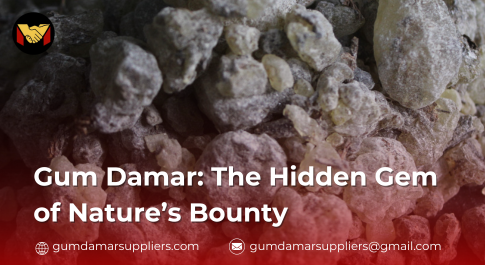
Gum Damar: The Hidden Gem of Nature’s Bounty
In the world of natural resins, one stands out for its unique properties and versatility: gum damar. Often overshadowed by more well-known resins like frankincense and myrrh, gum damar holds a rich history and diverse range of uses that make it a truly fascinating material. This natural resin, harvested from trees native to Southeast Asia, has long been cherished by local communities, artists, and industries alike. If you’ve never heard of it before, allow us to introduce you to this extraordinary gift from nature.
What is Gum Damar?
Gum damar is a natural resin extracted from trees in the Shorea genus, specifically Shorea robusta, found in tropical forests across Indonesia, Malaysia, and the Philippines. The resin oozes from the bark when the tree is tapped, and it hardens into a clear or slightly amber-colored gum. This resin has been used for centuries, dating back to ancient cultures that valued its many applications.
The Artistic Legacy of Gum Damar
One of the most notable uses of gum damar is in the art world. For centuries, it has been an essential ingredient in traditional varnishes, particularly in Southeast Asia. Artists and craftsmen often use damar as a base for painting, particularly in oil and encaustic mediums. Its clear and glossy finish enhances the vibrancy of colors and protects artwork from the ravages of time. The resin also plays a pivotal role in the creation of traditional batik art, where it is mixed with dyes to create intricate designs on fabric.
But its role in art isn’t limited to just Southeast Asia. Western artists, particularly during the Renaissance and Baroque periods, utilized damar varnish to finish their masterpieces. This varnish imparts a brilliant sheen to oil paintings and serves as a protective layer, preserving works for generations.
Gum Damar in Modern Industries
While gum damar’s role in art is well-documented, its applications stretch far beyond the canvas. In modern industries, it’s used in a variety of ways:
- Pharmaceuticals and Health Products: Gum damar is believed to have medicinal properties in traditional medicine. It has been used in formulations aimed at soothing respiratory issues, improving circulation, and acting as an antiseptic. Some modern health supplements also incorporate damar due to its antioxidant properties.
- Cosmetics and Personal Care: With its natural origins and soothing qualities, gum damar is found in some cosmetic products. It’s used in lotions, perfumes, and soaps, adding a touch of earthiness and helping with moisturizing. Its antibacterial and antifungal properties are an added bonus in skincare formulations.
- Industrial Uses: Damar resin is also utilized in the manufacture of rubber, adhesives, and coatings. It serves as a binding agent or plasticizer in products such as varnishes, paints, and even inks. Its role in enhancing durability and flexibility makes it a valuable resource in the production of high-performance materials.
Gum Damar in Traditional Rituals and Cultural Practices
In the cultures of Southeast Asia, gum damar is more than just a commodity. It holds cultural and spiritual significance. Traditionally, it has been used in incense and offerings during religious ceremonies. Its fragrant smoke is thought to cleanse spaces, elevate spiritual rituals, and provide a connection to the divine. The act of tapping the damar trees is also seen as a sacred practice, one that honors nature and the environment.
Sustainable Harvesting and Environmental Impact
Gum damar is often harvested in sustainable ways, with local communities tapping trees without cutting them down. This practice allows the trees to continue growing, producing resin for many years. Sustainable harvesting helps maintain the balance of the ecosystem and supports the livelihoods of the people who depend on this resin.
However, like all natural resources, there is a need for responsible management. Overharvesting can threaten the biodiversity of the forests where damar trees thrive. Fortunately, efforts are being made to ensure that damar is sourced in an eco-friendly manner, promoting both economic and environmental sustainability.
Conclusion: A Natural Treasure Worth Exploring
Gum damar may not be a household name, but it’s certainly a natural treasure worth exploring. Whether you are an artist seeking the perfect varnish, a business looking for sustainable materials, or someone intrigued by the diverse applications of this resin, damar offers a world of possibilities. Its rich history, combined with its modern-day uses, makes it a unique and invaluable resource.
Next time you come across damar resin—whether in a work of art, a cosmetic product, or a traditional incense offering—you’ll know you’re looking at a substance that has traveled through time and across cultures, continuing to enchant and benefit humanity in countless ways.
Pingback: Gum Damar and the Rise of Natural Wellness -